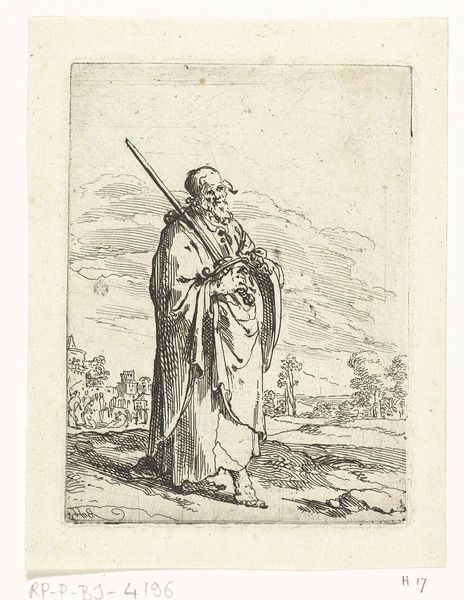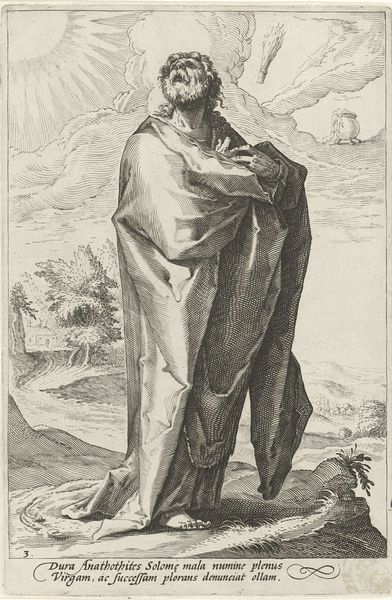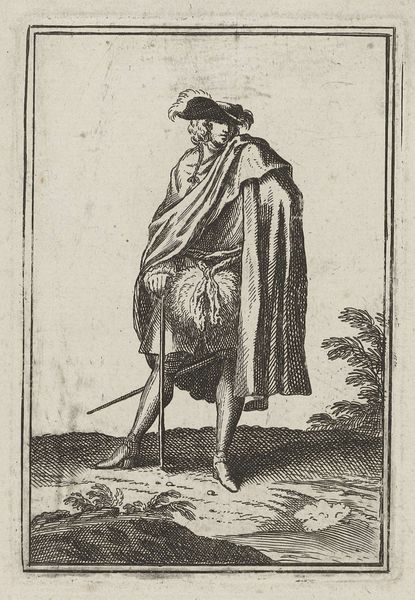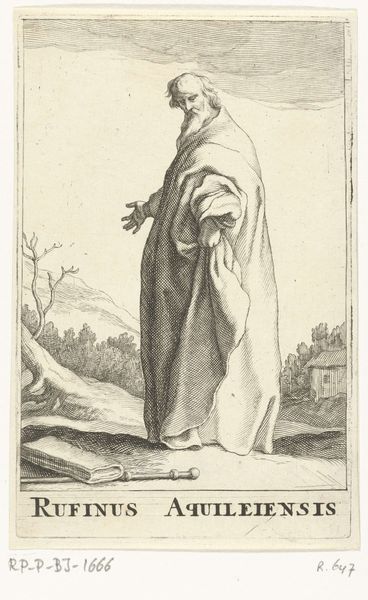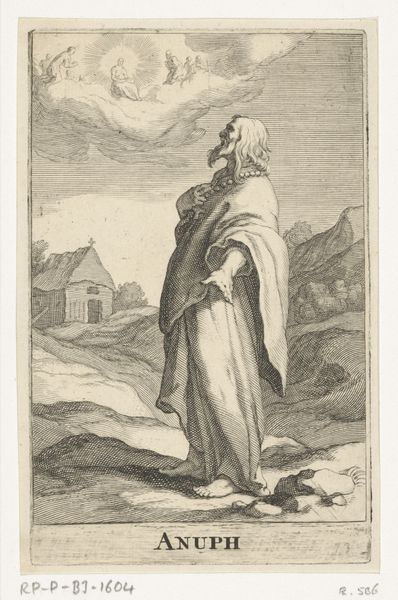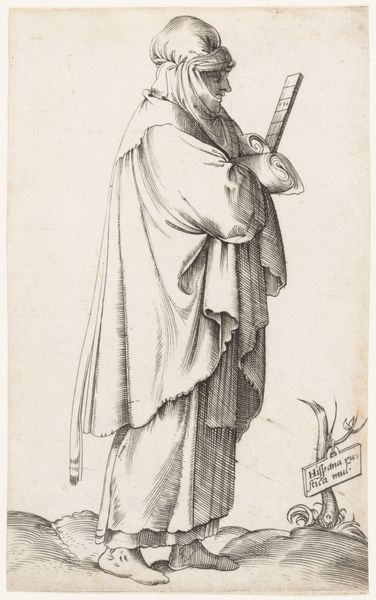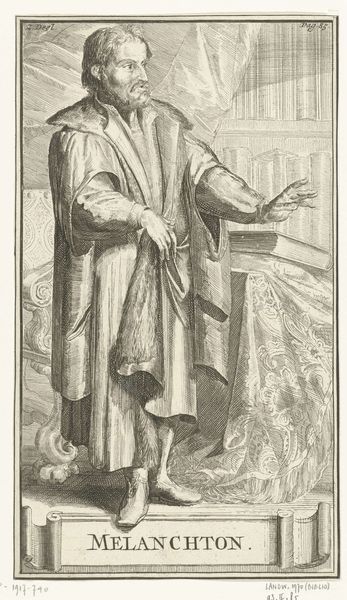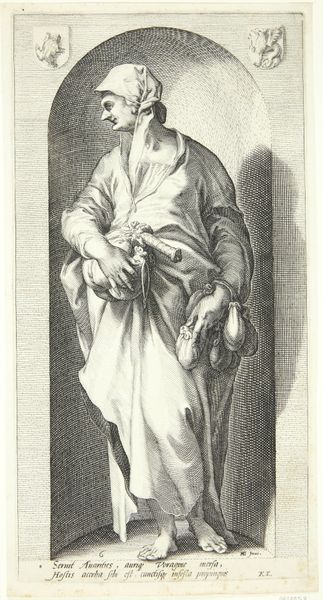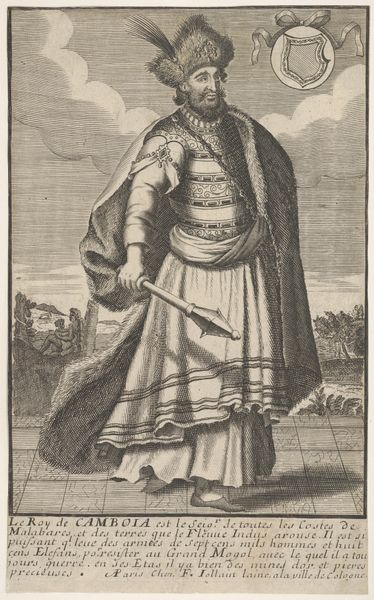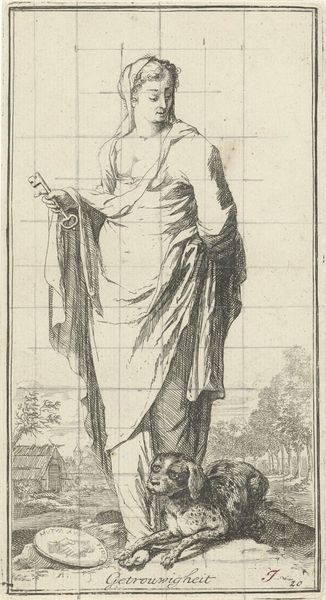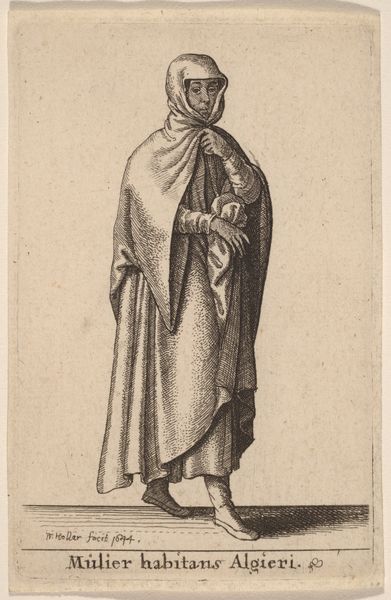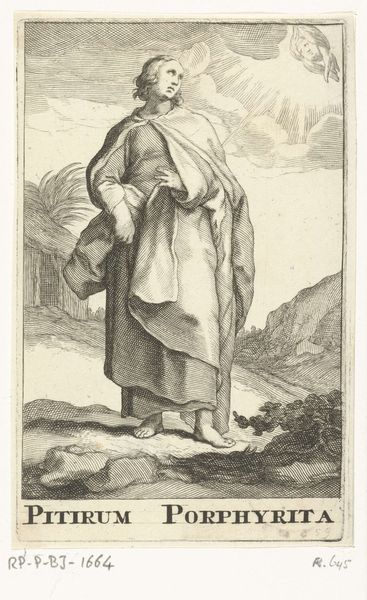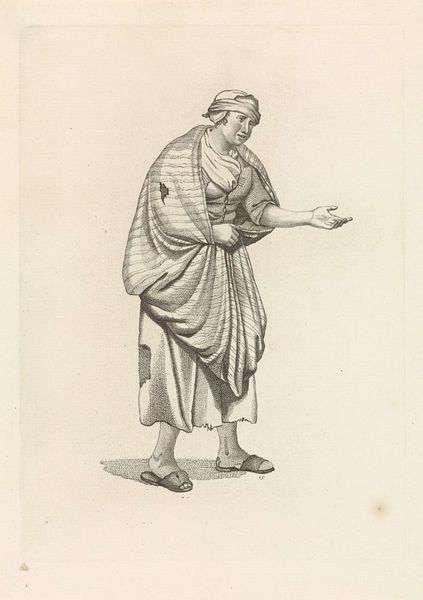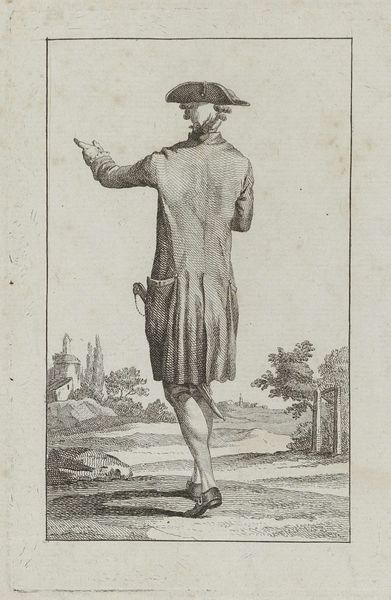
print, engraving
#
portrait
#
baroque
# print
#
caricature
#
engraving
Dimensions: height 135 mm, width 85 mm
Copyright: Rijks Museum: Open Domain
Editor: We're looking at "Heilige Ephraim van Edessa," an engraving by Frederick Bloemaert, created sometime after 1636. It's quite striking - the figure almost seems to float, his expression rather melancholy. What stands out to you as you examine this print? Curator: Considering its time, let’s analyze this print's place in the landscape of 17th-century Dutch printmaking and religious iconography. Think about the power of prints to disseminate ideas. How does this image of Saint Ephraim, through its very reproduction, serve a purpose beyond simple portraiture? Who might be the target audience, and what message is Bloemaert trying to convey through this particular depiction? Editor: I guess, the affordability and wide reach of prints meant that images of saints became more accessible, possibly strengthening religious identity. What does Saint Ephraim holding the cloth imply? Curator: Exactly! This gets to the heart of understanding the political and social role of images. He is seen holding coins, and Saint Ephraim of Edessa was known for his care of the poor and afflicted. Prints such as this one were often commissioned by religious orders. To your eye, how does this portrayal reflect or reinforce specific social roles or values prevalent at that time? Editor: It's fascinating how a seemingly simple portrait connects to wider religious and societal contexts! I didn't realize how much influence religious organizations had on artistic depictions and how prints were essential for the diffusion of knowledge. Curator: Indeed. Seeing art as a product of—and participant in—historical forces allows us a richer understanding. Editor: Thank you. I have more clues to analyze similar works!
Comments
No comments
Be the first to comment and join the conversation on the ultimate creative platform.
